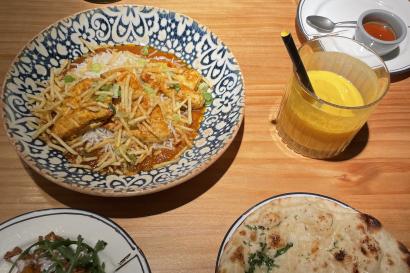Of the very little research on Spain I did before coming here, a great majority focused on Spanish food. I read that a key principle of Spanish cooking is to use the freshest and finest ingredients and interfere with them as little as possible. My observations so far have confirmed this. One of the first differences I noticed between the Spanish and American approaches to food is how much eating determines the rhythm of the day here and how different that rhythm is from the one I was accustomed to: breakfast, served around 8:30, consists of coffee and a piece of toast or a small pastry. Because this is so insubstantial one becomes hungry around 10:30, and the proper thing to do is head to a café- there are breaks built into class and work schedules for this- and get a beverage (coffee, beer, wine, etc.) and a pincho, which is anything from a slice of tortilla sandwiched in fresh-baked bread to a small plate of potatoes to a filled pastry, either sweet or savory. The main social and culinary event of the day is la comida, served around 2 pm and consisting of multiple courses. There is always, always, always bread, accompanied a soup or salad (or both), a main plate (usually meat, sometimes fish), and a dessert (apple, orange, or other fruit as seasons change). This meal is eaten slowly and at home. Lunch breaks are often up to two hours because after eating one must rest before he or she returns to work or school. Because the next meal isn’t until 9 or 10 pm and it is much smaller and lighter than la comida, it is quite common to go for pinchos (or tapas- these are the same thing, except in Basque country).
With the IES program we have visited several restaurants and cafés, including the elegant rancho mentioned in my last post, the cafeteria at USAL’s Facultad de Filología, for pinchos during the intensive orientation language class, and in Zamora, a very rustic subterranean bodega. The experience of eating at the bodega was one of my favorites I’ve had in Spain so far. Entering the vaulted space full of wacky décor (medieval farm implements, benches with iron headboards as backrests, signs that say singing is prohibited because it bothers the other clients) was in itself a thrill. It was nothing compared to what was to come, though. When we arrived the tables were already laid out with bread, oil, salad, and hot homemade chorizo as an appetizer. Soon we were given tortilla de patatas and pimientos asados along with wedges of Manchego cheese and the white asparagus we always see in jars in the supermarket- the vegetarian entrée. Next came heaping bowls of beicon, which is not like the bacon we have in the United States. It’s much thicker and is served in squares, not strips. It’s equally fatty and delicious, though. The main course, roasted ribs, arrived and arrived again- whenever we came close to finishing a plate, the gregarious proprietor of the restaurant would bring another. When we thought we couldn’t eat any more he appeared yet again with cups of ice cream and took orders for coffee. Many of us are still struggling to adjust to the multiple courses of Spanish meals and overeat when the first plate arrives, but we’re learning little by little that exercising restraint is worth the reward of being able to enjoy a wider variety of dishes and to live and eat the Spanish way.














Cailey Oehler
<p><span style="color: rgb(29, 29, 29); font-family: Arial, Verdana, sans-serif; font-size: 12px; line-height: normal; background-color: rgb(237, 237, 237);">I am a junior at Bowdoin College, where I am majoring in Spanish and minoring in Art History and Teaching. I'm outgoing and inquisitive, and getting to know other people is how I make sense of this mixed-up and beautiful world. My favorite hobbies are baking bread, playing ukulele, and camping. I love exploring new places and am looking forward to getting to know Salamanca as well as the fun and challenges I'll encounter in my travels around Europe.</span></p>







